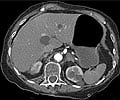The study has revealed that television advertisements were extremely potent in carrying home the desired messageor peppy insights for kicking the habit.
American Journal of Preventive Medicine has weighed the impact of advertisements that carry an anti-smoking message, with other types of cessation help -nicotine replacement therapy (NRT), prescribed medications, professional help or advice, self-help materials, cessation programs, telephone quit line, or web-based cessation sites.
The study has revealed that television advertisements were extremely potent in carrying home the desired message, especially those that portrayed smoking-related illnesses or peppy insights for kicking the habit. Extensive reach possible by the TV ads helped many smokers to quit (30.5%), than any of the other methods. NRT helped 20.8%, professional help affected 11.1%, and telephone quit lines helped less than one percent of the quitters.Lead author Lois Biener, PhD, Center for Survey Research, University of Massachusetts Boston, has said "These findings suggest that the resources being devoted to the quit line would be better spent if used for a national anti-tobacco media campaign. Anti-smoking ads on television are likely to be the sole source of support for quitting smoking among young adults, who make less use of traditional forms of quitting assistance. It is noteworthy that the illness ads, body bags, and inspirational quit tips were the types of ads deemed helpful by most quitters. What these ads appear to have in common is that all tend to arouse high levels of emotion. The fact that such ads are spontaneously recalled by successful quitters as the ones instrumental in their success provides confirmation for previous studies that noted the superior effectiveness of emotionally arousing ads…."











